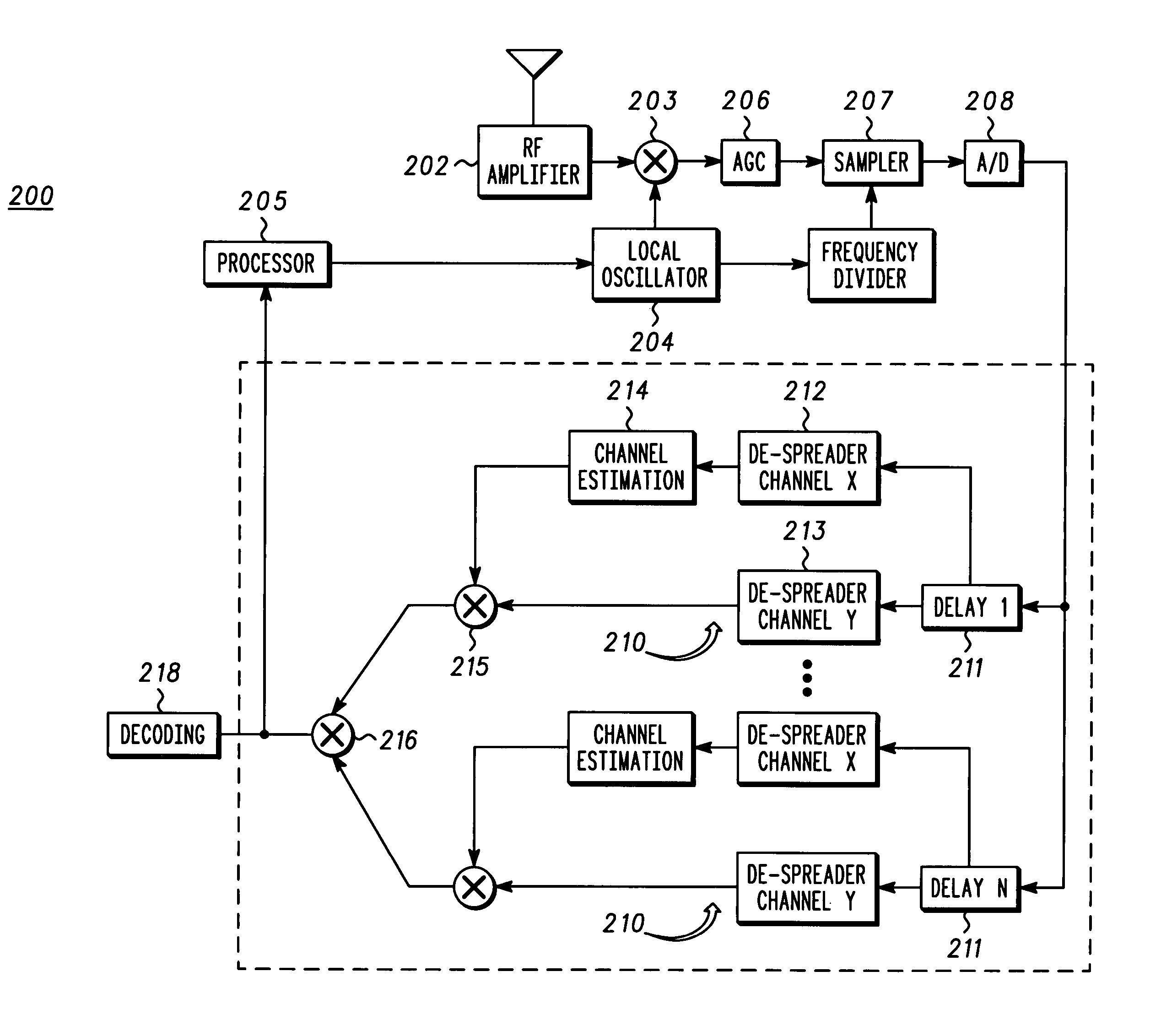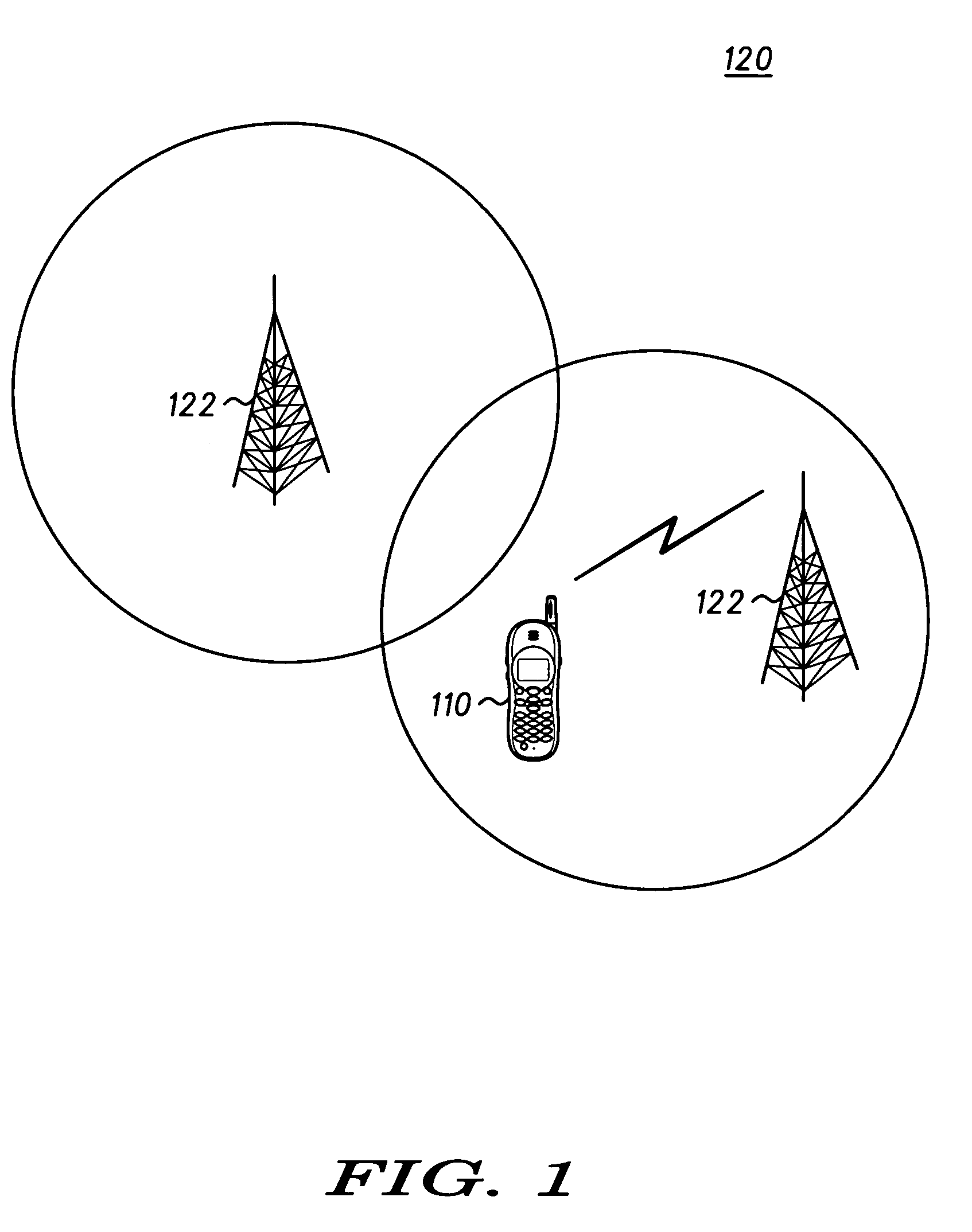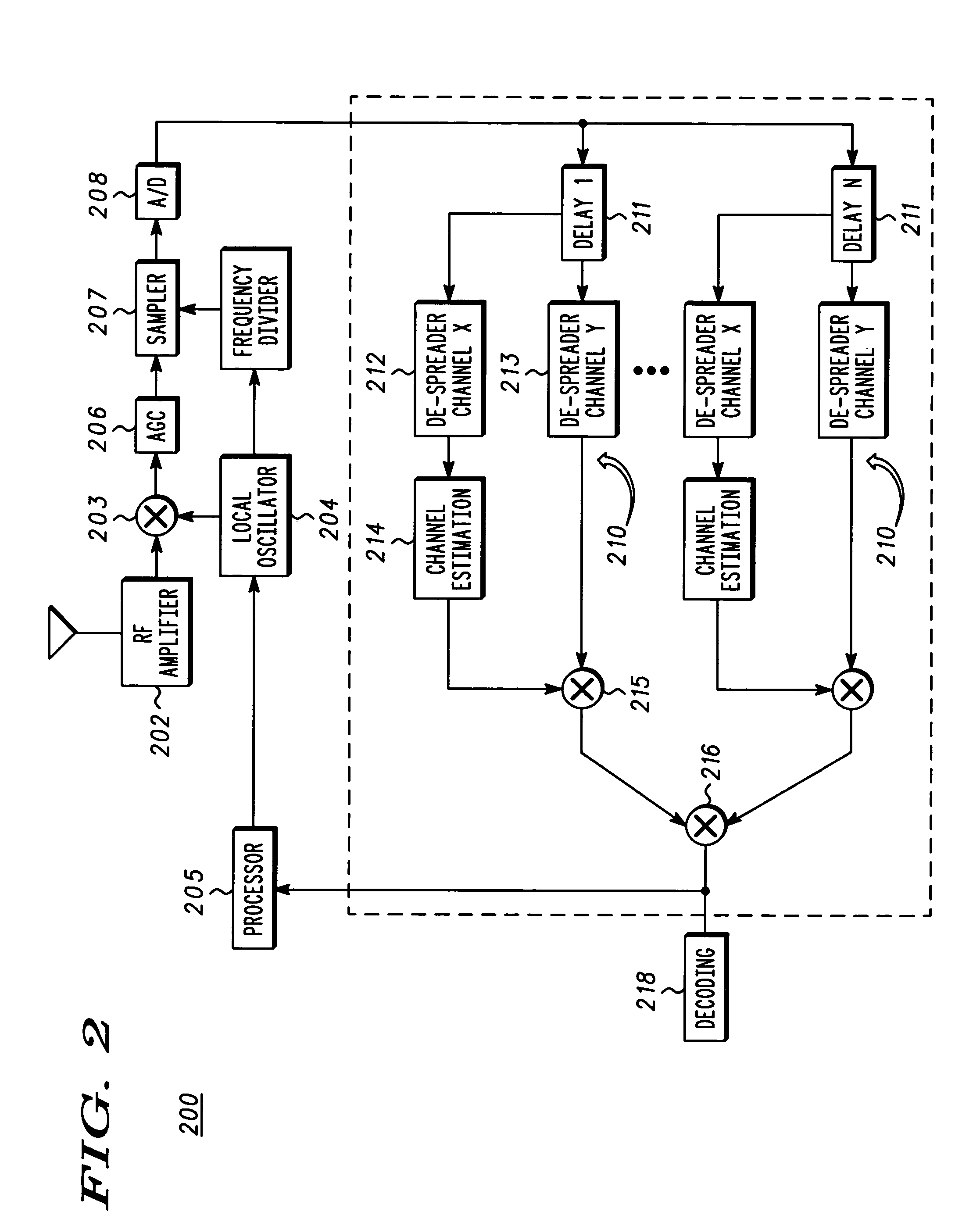Downlink power control in wireless communications networks and methods
a wireless communication network and power control technology, applied in the field of wireless communications, can solve the problems of affecting the accuracy of the sir estimation, interference from the primary and secondary synchronization channels, and inaccuracy in the estimation of the sir,
- Summary
- Abstract
- Description
- Claims
- Application Information
AI Technical Summary
Problems solved by technology
Method used
Image
Examples
Embodiment Construction
[0012] In FIG. 1, a wireless communications device 110 in a wireless communication network 120, for example, a 3rd Generation Partnership Project (3GPP) Universal Mobile Telephone System (UMTS) W-CDMA wireless communications network, periodically transmits power control commands to network base stations 122. Each base station uses the SIR information to allocate downlink transmission power resources. The SIR may also be used for base station selection.
[0013] The power control command is based on a power control algorithm, residing on the wireless device, that estimates a Signal-to-Interference Ratio (SIR) based on rake receiver outputs as is known generally in the art. FIG. 2 is an exemplary partial schematic block diagram of a rake receiver 200. An amplifier 202 amplifies the received signal before a mixer 203 combines the amplified signal with a signal from a local oscillator 204, which is controlled by a processor 205. The mixed signal is subject to gain control by automatic gai...
PUM
 Login to View More
Login to View More Abstract
Description
Claims
Application Information
 Login to View More
Login to View More - R&D
- Intellectual Property
- Life Sciences
- Materials
- Tech Scout
- Unparalleled Data Quality
- Higher Quality Content
- 60% Fewer Hallucinations
Browse by: Latest US Patents, China's latest patents, Technical Efficacy Thesaurus, Application Domain, Technology Topic, Popular Technical Reports.
© 2025 PatSnap. All rights reserved.Legal|Privacy policy|Modern Slavery Act Transparency Statement|Sitemap|About US| Contact US: help@patsnap.com



